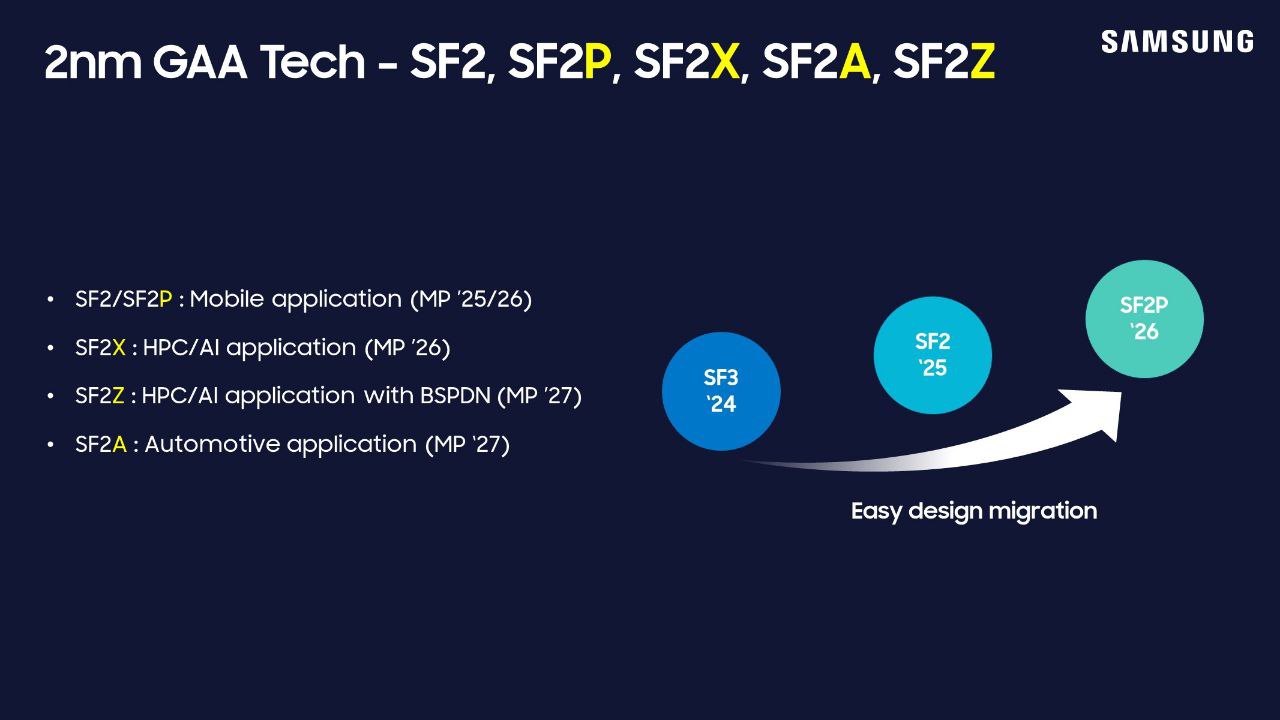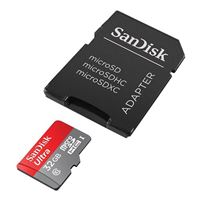BSPDN and 2nm Evolution By 2027
Samsung this week has unveiled its latest course of utilized sciences roadmap on the agency’s Samsung Foundry Dialogue board (SFF) U.S. The model new plan covers the evolution of Samsung’s 2nm-class manufacturing nodes by 2027, along with a course of experience with a backside vitality provide, re-emphasizing plans to hold out a 1.4nm-class node in 2027, and the introduction of a ‘extreme value’ 4nm-class manufacturing tech.
Samsung Foundry’s key bulletins for within the current day are clearly focused on the its 2nm-class course of utilized sciences, which are set to enter manufacturing in 2025 and might span to 2027, when the company’s 1.4-nm class manufacturing node is able to enter the scene. Samsung could be together with (or moderately, renaming) one different 2nm-class node to their roadmap with SF2, which was beforehand disclosed by Samsung as SF3P and aimed towards high-performance items.
“We have refined and improved the SF3P, resulting in what we now discuss with as SF2,” a Samsung spokesperson knowledgeable AnandTech. “This enhanced node incorporates quite a few course of design enhancements, delivering notable vitality, effectivity, and area (PPA) benefits.”
| Samsung Foundry for Principal-Edge Nodes Launched on June 12, 2024 Compiled by AnandTech |
||||||||
| HVM Start | 2023 | 2024 | 2025 | 2026 | 2027 | 2027 | ||
| Course of | SF3E | SF3 | SF2 (aka SF3P) |
SF2P/SF2X | SF2Z | SF1.4 | ||
| FET | GAAFET | |||||||
| Vitality Provide | Entrance facet | Backside (BSPDN) | ? | |||||
| EUV | 0.33 EUV | ? | ? | ? | ? | |||
That’s one different occasion of a rebranding of recent fabrication nodes throughout the present years by a critical chipmaker. Samsung Foundry won’t be disclosing any specific PPA enhancements SF3P has over SF2, and for now’s solely stating in high-level phrases that may most likely be a better-performing node than the deliberate SF3P.

Within the meantime, this week’s announcement moreover accommodates new information on Samsung’s subsequent batch in fact of nodes, which are deliberate for 2026 and 2027. In 2026 Samsung can have SF2P, an additional refinement of SF2 which incorporates ‘faster’ however a lot much less dense transistors. That may most likely be adopted up in 2027 with SF2Z, which supplies backside vitality provide to the mixture for greater and higher top quality vitality provide. Significantly, Samsung is targetting voltate drop (aka IR drop) proper right here, which is an ongoing concern in chip design.
Lastly, SF1.4, a 1.4nm-class node, is on monitor for 2027 as properly. Apparently, nonetheless, it seems to be like choose it does not operate a backside vitality provide. Which, per current roadmaps, would have Samsung because the one foundry not using BSPDN for his or her first 1.4nm/14Oh-class node.
“We have optimized BSPDN and built-in it for the first time throughout the SF2Z node we launched within the current day,” the spokesperson knowledgeable us. “We’ll proceed to refine this experience and apply it to future nodes, nonetheless we should not have a particular timeline to share in the mean time.”
| Chip Fab Roadmaps for Principal-Edge Nodes Info launched all through conference calls, events, press briefings and press releases. Compiled by AnandTech |
|||||||
| HVM Start | 2023 | 2024 | 2025 | 2026 | 2027 | ||
| Intel | Course of | Intel 3 | Intel 20A | Intel 18A | Intel 14A | Intel 10A | |
| FET | FinFET | RibbonFET (GAAFET) | |||||
| Vitality | Entrance facet | PowerVia (BSPDN) | |||||
| EUV | 0.33 EUV | 0.55 EUV + DSA | |||||
| Samsung | Course of | SF3E | SF3 | SF2 | SF2P/SF2X | SF2Z/SF1.4 | |
| FET | GAAFET | ||||||
| Vitality | Entrance facet | Backside/? | |||||
| EUV | 0.33 EUV | ? | ? | ? | |||
| TSMC | Course of | N3E/N3P | N3S/N3X | N2 | A16 | A14 (?) | |
| FET | FinFET | GAAFET | |||||
| Vitality | Entrance facet | Super Vitality Rail (BSPDN) | |||||
| EUV | 0.33 EUV | ? | |||||
When as compared with totally different contract fabs, Samsung’s roadmap is now roughly in step with the remaining with regard to ‘nanometer’ designations. Though absent extra technical disclosures from Samsung, it stays unclear what the exact benefits will most likely be for each node and the best way they consider to their predecessors, to not point out how they are going to consider to Intel Foundry and TSMC.





